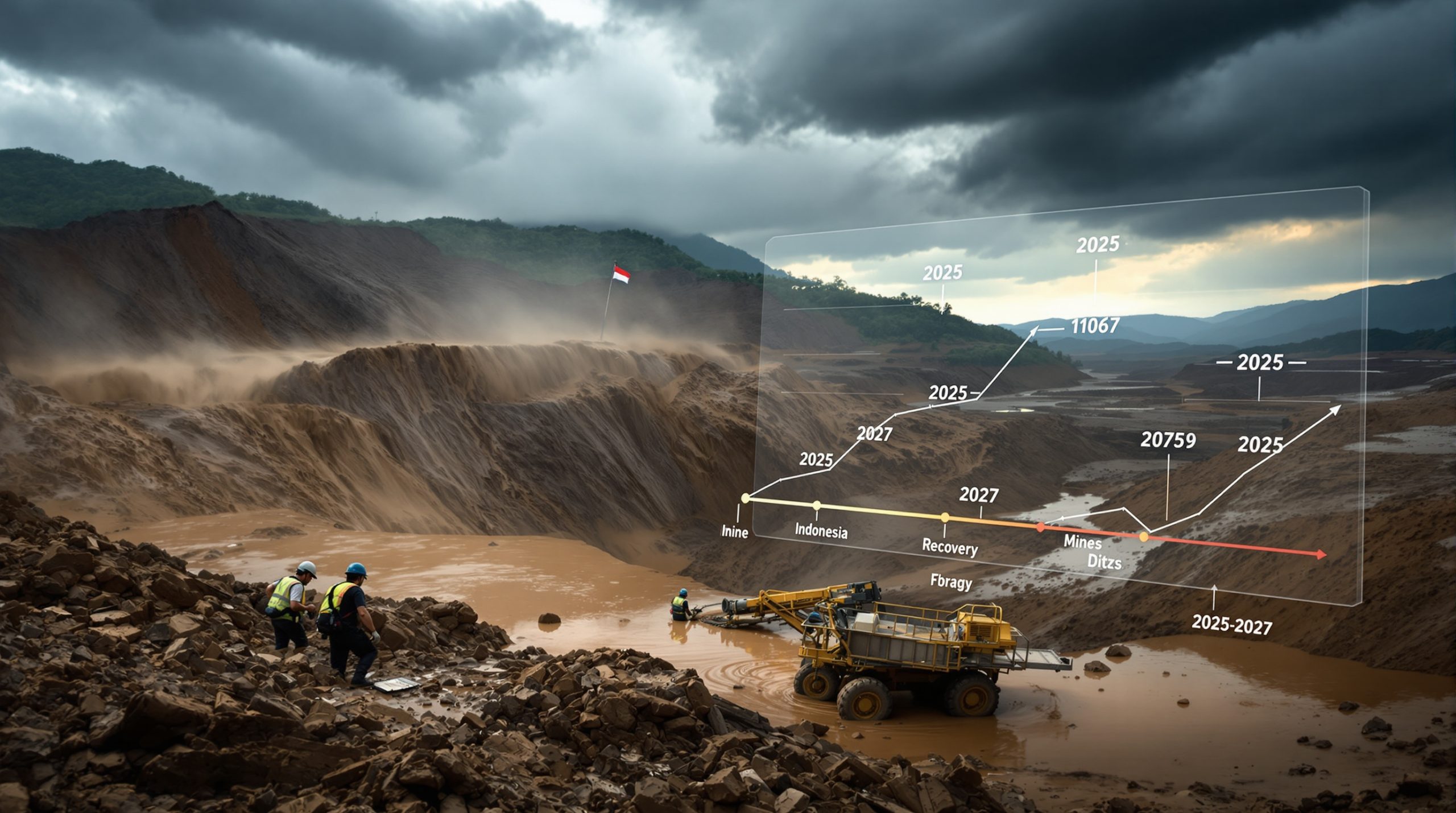How Does the Libby Project Advance US Critical Mineral Production?
The US Forest Service's approval of Hecla Mining Company's Libby copper/silver exploration project marks a significant milestone in strengthening America's critical mineral supply chains. This decision authorizes Hecla to pursue comprehensive exploration activities at their 100%-owned site in Lincoln County, Montana, potentially unlocking substantial domestic copper and silver resources.
America faces serious supply vulnerabilities in critical minerals, with approximately 76% of US copper consumption being imported as of 2023. This dependency underscores the mineral exploration importance in developing domestic resources like the Libby project, which could substantially reduce foreign reliance for these essential metals.
Montana currently leads US copper production with approximately 1.8 billion pounds annually, making it an ideal location for expanding domestic capacity. The Libby project, situated southwest of Libby, Montana, represents an opportunity to further cement the state's position as a copper powerhouse while addressing national security concerns related to critical minerals security.
The project's advancement demonstrates evolving federal approaches to critical mineral development. The implementation of the FAST-41 process (Fixing America's Surface Transportation Act) played a crucial role in streamlining the permitting timeline while maintaining environmental protections. This process typically reduces federal permitting timelines by 1.5-2 years compared to traditional approaches, allowing vital resource projects to advance more efficiently.
What Resources Does the Libby Project Contain?
The Libby project's resource potential positions it as one of the more significant undeveloped copper-silver deposits in the United States. According to official estimates as of December 31, 2024, the project contains substantial inferred mineral resources:
- 112.2 million tonnes of inferred resources
- Average grade of 0.7% copper
- Average grade of 1.6 oz/t silver
- Contained metal of over 1.5 billion pounds of copper
- Contained metal of 183 million ounces of silver
These figures represent impressive potential, particularly considering that the project's 0.7% copper grade exceeds the global average of approximately 0.6% for new copper projects. This higher-than-average grade enhances the project's economic viability and potential production efficiency.
The inferred resource classification—the lowest confidence category in mineral resource classification under industry standards—indicates that additional drilling programs insights will be needed to upgrade these resources to higher confidence categories. This further underscores the importance of the recently granted exploration approvals.
What Geological Potential Remains at the Libby Project?
Beyond the currently defined resources, the Libby project demonstrates significant geological upside potential. The mineralization remains open in multiple directions, creating opportunities for resource expansion through further exploration:
- Open down dip (deeper extensions)
- Open to the north (lateral extensions)
- Potential western extensions previously thought to be limited by the Rock Lake fault
A particularly promising development involves new geological interpretations of the Rock Lake fault, which was previously thought to limit mineralization extension westward. Earlier models suggested the fault dipped eastward, but revised interpretations indicate it may actually dip westward. This reinterpretation could substantially expand the exploration envelope by opening previously unexplored areas for investigation.
This type of fault reinterpretation can fundamentally alter drilling targets and resource expansion strategies. In mineral exploration, structural controls like faults often determine the boundaries of mineral deposits, making their accurate characterization essential for effective exploration programs.
How Did the Approval Process Unfold?
The regulatory journey for the Libby project highlights both procedural innovations and collaborative approaches to permitting critical mineral resources. Key elements of the approval process included:
- Implementation of the FAST-41 process to streamline federal permitting
- Extensive cooperation among federal agencies, state officials, and local stakeholders
- Comprehensive environmental assessment under NEPA guidelines
- Finding of No Significant Impact (FONSI), enabling the project to proceed without requiring a full Environmental Impact Statement
The FAST-41 process—created under the Fixing America's Surface Transportation Act—played a pivotal role in advancing the project efficiently. This program coordinates federal environmental reviews for eligible infrastructure projects, including critical mineral developments, without sacrificing environmental protections.
The Forest Service approval indicates that their environmental assessment determined the exploration activities would not cause significant adverse environmental effects. This determination represents a crucial regulatory milestone that allows exploration to proceed while ensuring environmental safeguards remain in place.
What Exploration Activities Will Now Proceed?
With regulatory approval secured, Hecla can now implement a comprehensive exploration program designed to gather essential data for potential mine development. This exploration phase will focus on multiple technical areas:
- Expanded drilling programs to refine resource estimates and upgrade inferred resources
- Detailed geological mapping to enhance structural understanding
- Hydrological studies to characterize groundwater systems
- Environmental baseline data collection for future permitting requirements
- Geotechnical investigations to determine optimal mining approaches
This multi-disciplinary data collection effort provides the foundation for potential future development decisions. The quality and completeness of this information will significantly influence the project's timeline and development pathway.
The exploration program represents a critical investment in reducing project uncertainty and enhancing the confidence in resource estimates. Successful exploration results could substantially increase the project's value and accelerate its development timeline.
What Economic Benefits Could the Project Deliver?
While still in the exploration phase, the Libby project offers significant economic potential for northwestern Montana and the broader regional economy. The project could deliver substantial benefits through:
- Creation of high-paying mining jobs in a region with mining heritage
- Local economic stimulus through procurement and services
- Tax revenue generation for local and state governments
- Workforce development opportunities in specialized mining skills
The economic impact could be particularly meaningful for Lincoln County, which had an unemployment rate of 4.2% as of September 2025, slightly higher than the national average of 3.8%. Mining sector jobs in Montana average $76,000 annually—significantly above the state median income of $57,000—creating opportunities for economic advancement.
If the project advances to production, it would generate additional long-term employment in operations, maintenance, and administration. These jobs typically offer competitive wages and benefits, creating sustained economic opportunities for local communities still recovering from the decline of traditional resource industries.
What Environmental Considerations Are Being Addressed?
Responsible environmental management remains central to the Libby project's development approach. The US Forest Service's Finding of No Significant Impact indicates the exploration activities meet federal environmental standards, but ongoing environmental considerations include:
- Comprehensive water quality protection measures
- Wildlife habitat preservation strategies
- Minimization of surface disturbance during exploration
- Detailed mine reclamation approaches for all disturbed areas
- Continuous environmental monitoring programs
These environmental safeguards reflect contemporary expectations for responsible resource development and ensure the project advances while protecting the region's natural heritage. The exploration phase provides an opportunity to gather additional environmental baseline data that will inform future development plans and permitting requirements.
Modern mining practices have evolved significantly, with new technologies enabling more precise resource targeting, smaller surface footprints, and enhanced environmental protection. These advances allow projects like Libby to potentially deliver economic benefits while maintaining high environmental standards.
How Does This Project Fit Into Hecla's Corporate Strategy?
The advancement of the Libby project aligns with Hecla Mining Company's broader corporate strategy focused on developing high-quality North American precious and base metal assets. The company's approach encompasses:
- Maintaining a diversified portfolio of producing and development assets
- Focusing on jurisdictions with established mining frameworks
- Balancing near-term production with long-term growth opportunities
- Exploring potential partnership approaches to optimize capital allocation
Hecla has indicated openness to strategic partnerships for the Libby project while maintaining economic exposure to the significant silver resources associated with the deposit. This partnership approach could accelerate development while managing capital requirements and project risks.
The project's substantial silver content—183 million ounces—provides Hecla with significant precious metal exposure alongside the copper resource. This diversified metal profile enhances the project's economic resilience across different metal price environments and market cycles.
What Are the Next Steps for the Libby Project?
With Forest Service approval secured, the Libby project enters a critical phase of development that includes several parallel workstreams:
- Implementation of the approved exploration program
- Collection and analysis of geological, hydrological, and environmental data
- Evaluation of potential mining methods and processing approaches
- Engagement with potential strategic partners for project advancement
- Continued stakeholder communication and community engagement
The exploration results will substantially influence future development decisions, including potential mine design, processing methods, and infrastructure requirements. Successful exploration outcomes could accelerate the project's advancement toward development decisions and subsequent permitting applications.
Community engagement will remain essential throughout this process, ensuring local stakeholders remain informed about project activities and have opportunities to provide input on development approaches. This collaborative approach supports social license and creates foundations for long-term positive relationships.
How Does This Project Support US Critical Mineral Security?
The advancement of domestic copper and silver resources like the Libby project directly supports broader national objectives related to critical mineral security and supply chain resilience. These benefits include:
- Reducing dependence on foreign sources for essential metals
- Strengthening domestic supply chains for clean energy technologies
- Supporting manufacturing resilience through secure material inputs
- Developing resources under stringent US environmental and labor standards
The strategic importance of copper continues to grow as electrification accelerates across the economy. US copper demand is projected to increase by 70% by 2035 due to electrification and renewable energy infrastructure, according to the International Energy Agency. This growing demand underscores the importance of developing copper investment strategies and domestic resources like Libby.
Currently, China controls approximately 40% of global copper refining capacity, creating potential supply chain vulnerabilities. Domestic projects like Libby exploration project provide opportunities to reduce these vulnerabilities by developing resources within secure supply chains under US regulatory frameworks.
FAQ: Key Questions About the Libby Project
What is the current status of the Libby project?
The Libby project has received final approval from the US Forest Service for its exploration phase, allowing Hecla to gather essential geological, hydrological, and environmental data needed to evaluate the deposit's full potential.
How much copper and silver could the project eventually produce?
While production figures would depend on future development decisions, the current resource estimate of over 1.5 billion pounds of copper and 183 million ounces of silver indicates significant production potential if developed.
What timeline is expected for potential development?
The exploration phase will provide critical data for development decisions. If results support mine development, Hecla would need to submit additional permit applications and complete further environmental reviews before construction could begin.
How is Hecla addressing environmental concerns?
Hecla is implementing comprehensive environmental protection measures, including water quality monitoring, wildlife habitat preservation, and detailed reclamation planning to ensure responsible resource development.
What role might strategic partnerships play in the project's development?
Hecla has indicated openness to partnering with strategic investors who could participate in the exploration phase and beyond, while maintaining the company's economic exposure to the significant silver resources.
Disclaimer
This article contains forward-looking statements regarding resource potential, project timelines, and economic impacts. Mineral resources that are not mineral reserves do not have demonstrated economic viability. Readers should note that exploration results may not lead to commercial development, and economic projections remain subject to numerous technical, financial, and regulatory factors. Investment decisions should be made only after conducting thorough due diligence and consulting qualified financial advisors.
Ready to Spot the Next Major Mineral Discovery Before the Market Does?
Don't miss out on the opportunity to receive instant alerts on significant ASX mineral discoveries, powered by Discovery Alert's proprietary Discovery IQ model that transforms complex data into actionable investment insights. Explore why historic discoveries can generate substantial returns by visiting Discovery Alert's dedicated discoveries page.




